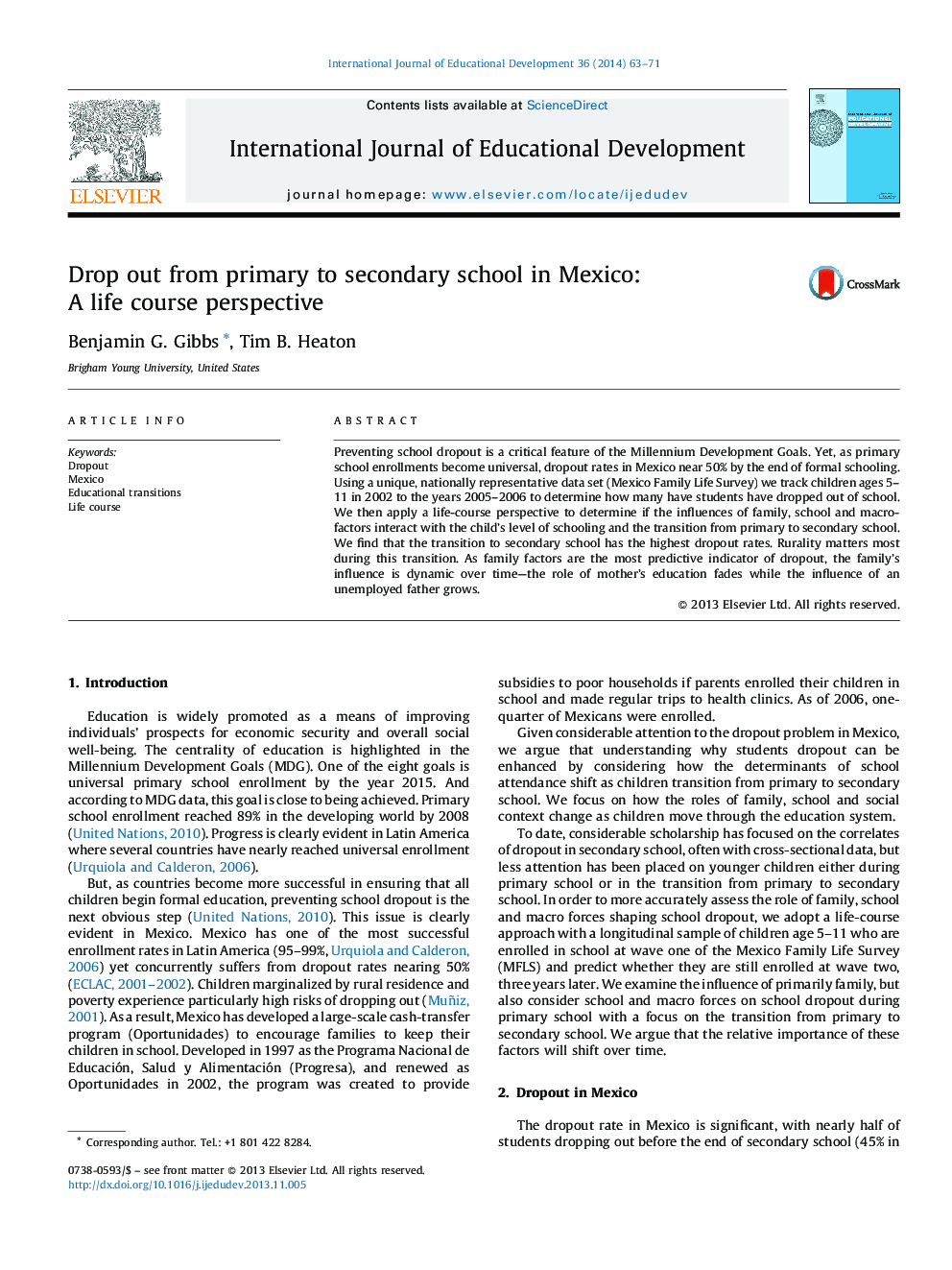| کد مقاله | کد نشریه | سال انتشار | مقاله انگلیسی | نسخه تمام متن |
|---|---|---|---|---|
| 356121 | 1435124 | 2014 | 9 صفحه PDF | دانلود رایگان |
• Dropout rates in Mexico near 50% by the end of formal schooling.
• Using the Mexico Family Life Survey we track children age 5–11 (from 2002 to 2006) to determine drop out.
• The transition from primary to secondary (secundaria) school has the highest dropout rates.
• Family factors are the most predictive indicator of dropout.
• The role of mother's education on dropout fades while the influence of an unemployed father grows.
Preventing school dropout is a critical feature of the Millennium Development Goals. Yet, as primary school enrollments become universal, dropout rates in Mexico near 50% by the end of formal schooling. Using a unique, nationally representative data set (Mexico Family Life Survey) we track children ages 5–11 in 2002 to the years 2005–2006 to determine how many have students have dropped out of school. We then apply a life-course perspective to determine if the influences of family, school and macro-factors interact with the child's level of schooling and the transition from primary to secondary school. We find that the transition to secondary school has the highest dropout rates. Rurality matters most during this transition. As family factors are the most predictive indicator of dropout, the family's influence is dynamic over time—the role of mother's education fades while the influence of an unemployed father grows.
Journal: International Journal of Educational Development - Volume 36, May 2014, Pages 63–71
